The front
porch is a separate detachable unit held in place by the porch roof
which is part of the second floor and the "water table" which is the
first board laid down just above the foundation to align the siding.
The porch consists of a 1/4 " sheet of beech cut to the size of the
porch floor
with cutouts for the vertical posts. Shown on the photograph is the
porch floor being glued with epoxy to the 1/4" thick pine foundation
strips.
|
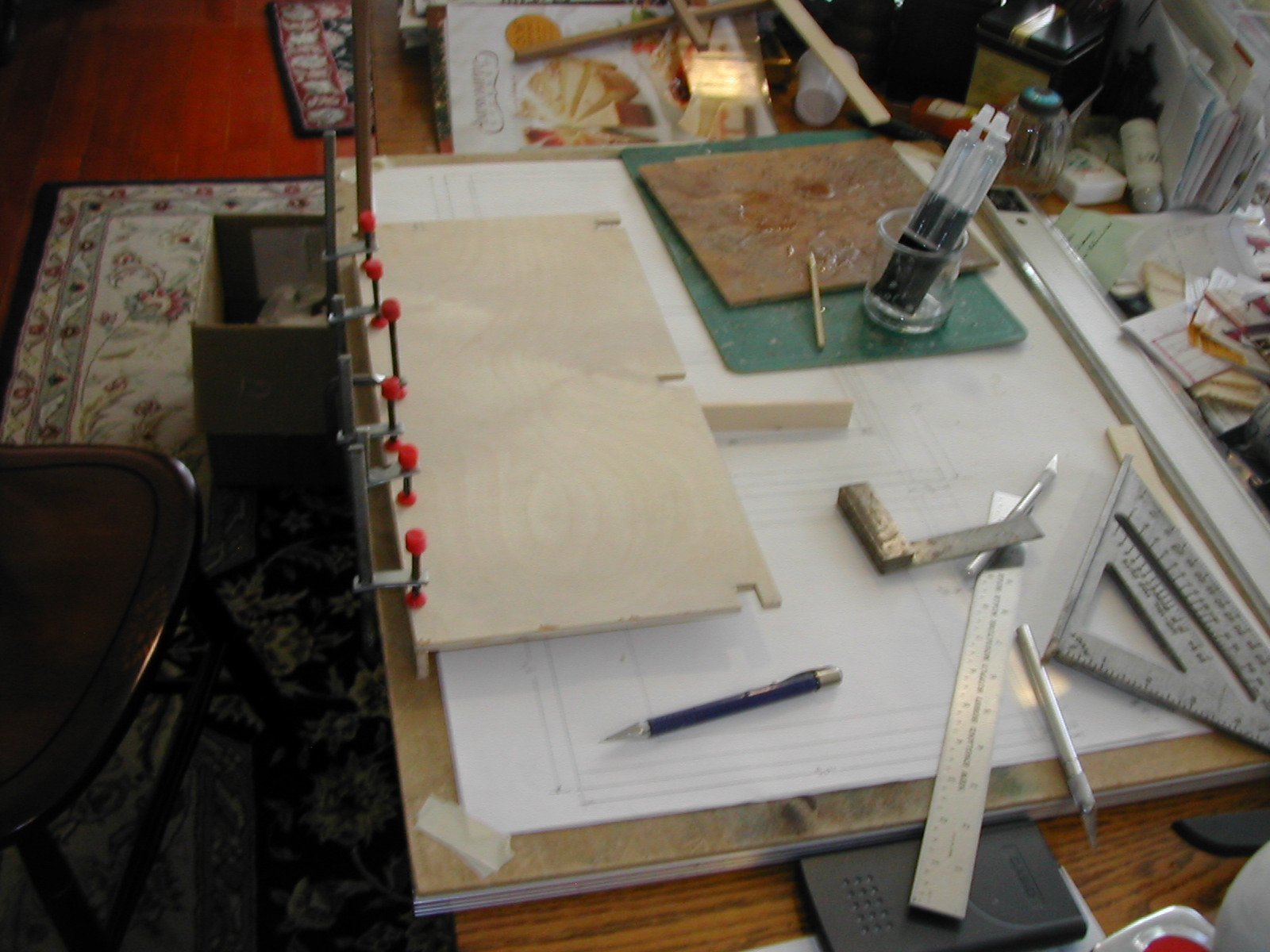 |
The next step
is to glue the mahogany vertical posts to the floor and foundation with
epoxy. The square shown on the right was used to insure that the
vertical strips were truly vertical. Then 1/4 " pine strips are glued
to the vertical posts.
|
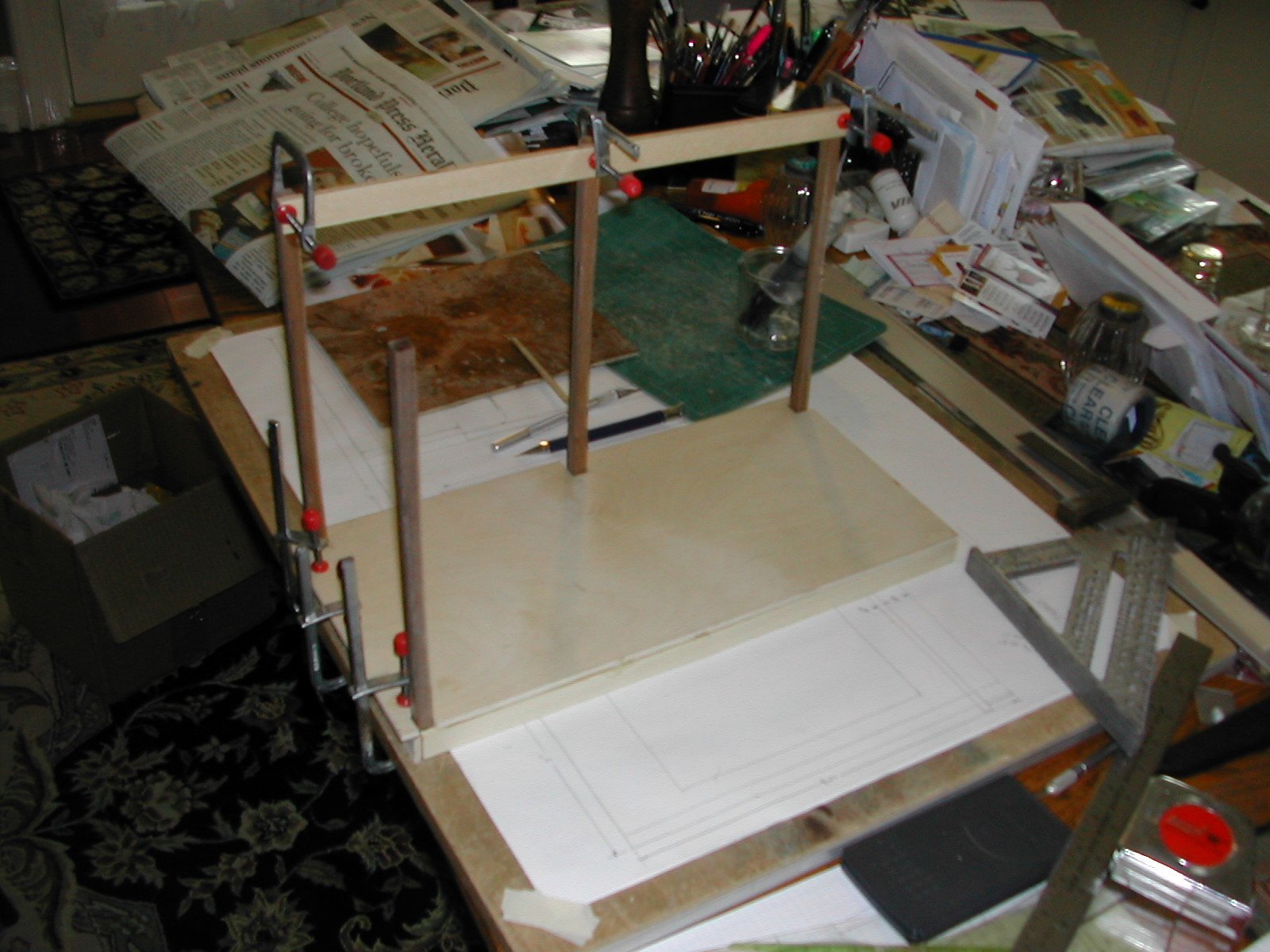 |
The porch
brackets were made to exactly match the real brackets by taking a
photograph of the brackets as shown on the right.
|
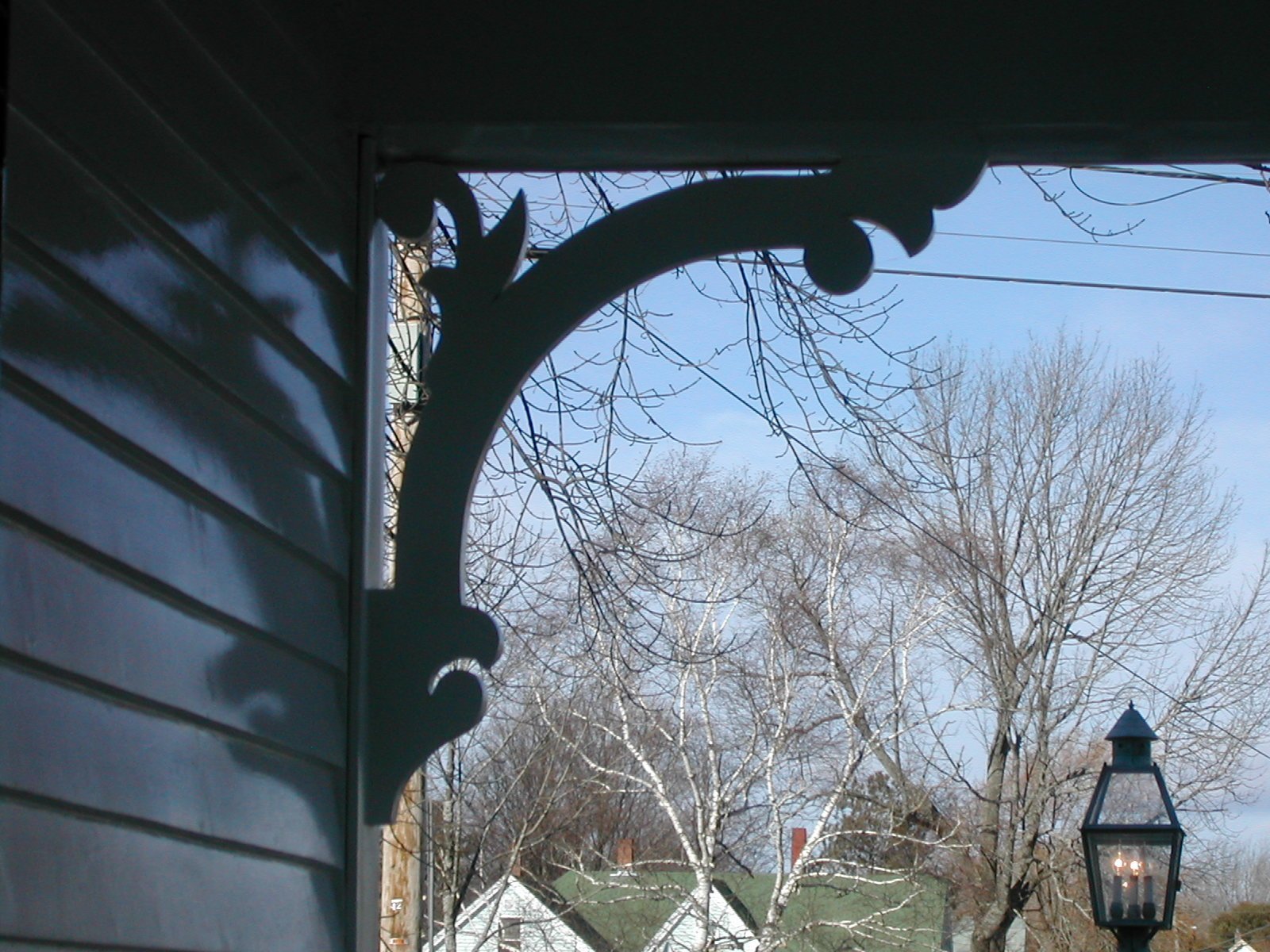 |
This
photograph was then processed using "Paint Shop Pro" to eliminate the
background and reduce them to scale size as shown. The photograph was
then printed on high quality high gloss photographic paper
to be used as a template.
|
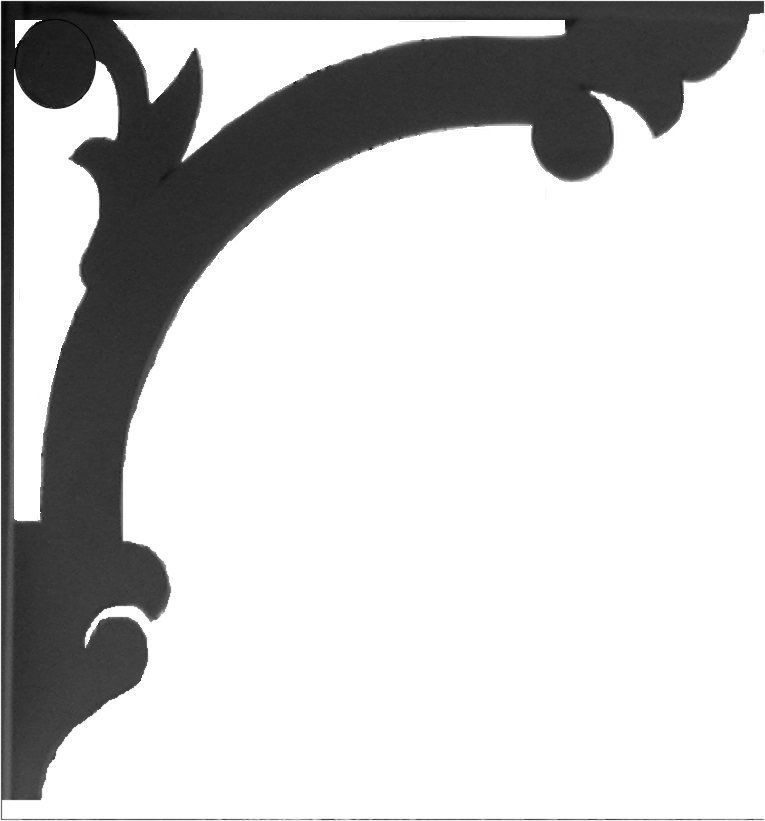 |
The template
was then glued to a 1/4 " sheet of maple using ordinary glue stick
paste
so that the template can be easily removed after the corner brackets
were cut using a scroll saw.
|
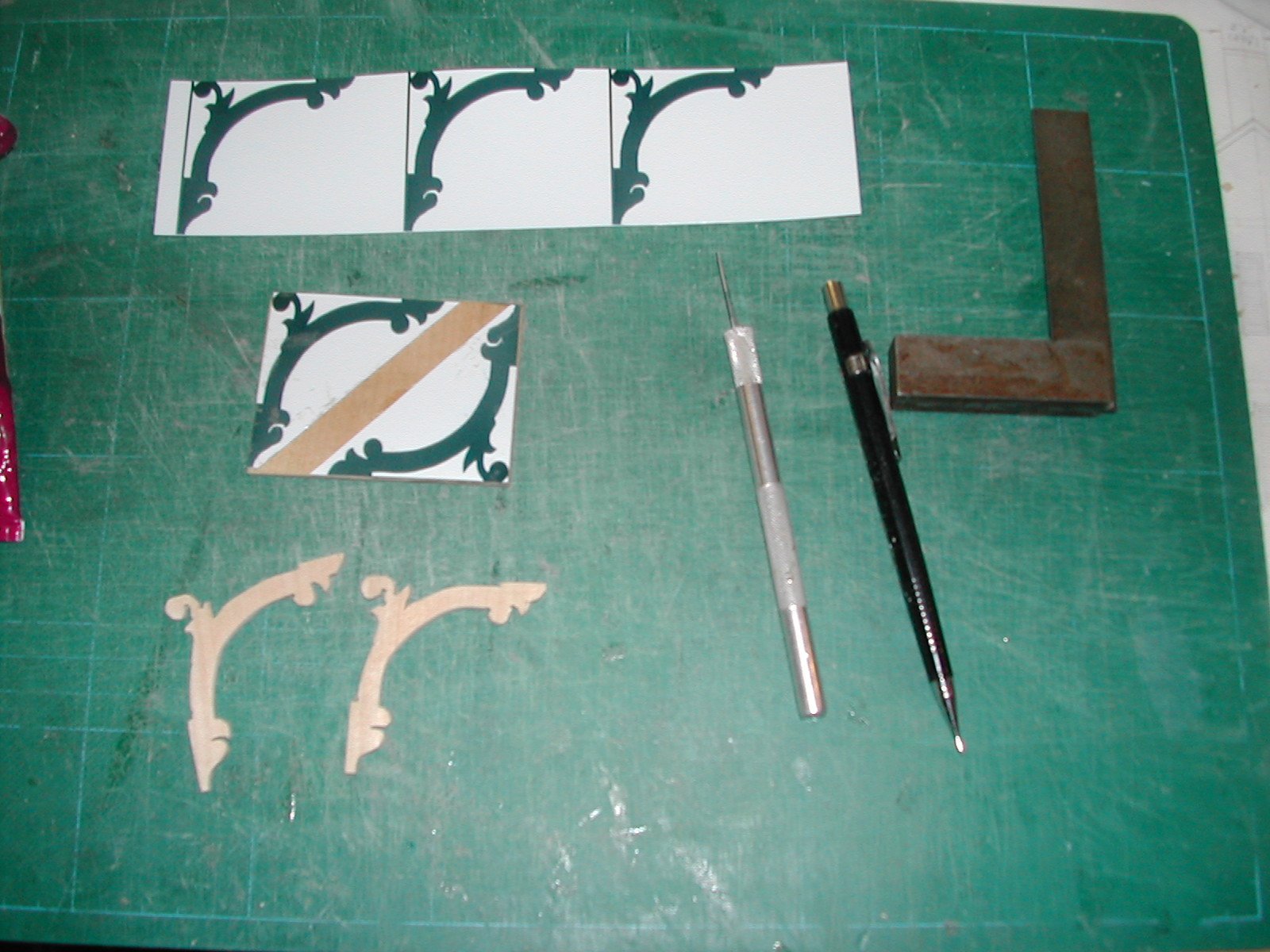 |
Shown on the
right are the completed porch corner brackets which have been sanded to
a smooth finish and ready for two primer coats of white paint and
several top coats of high gloss exterior house paint.
|
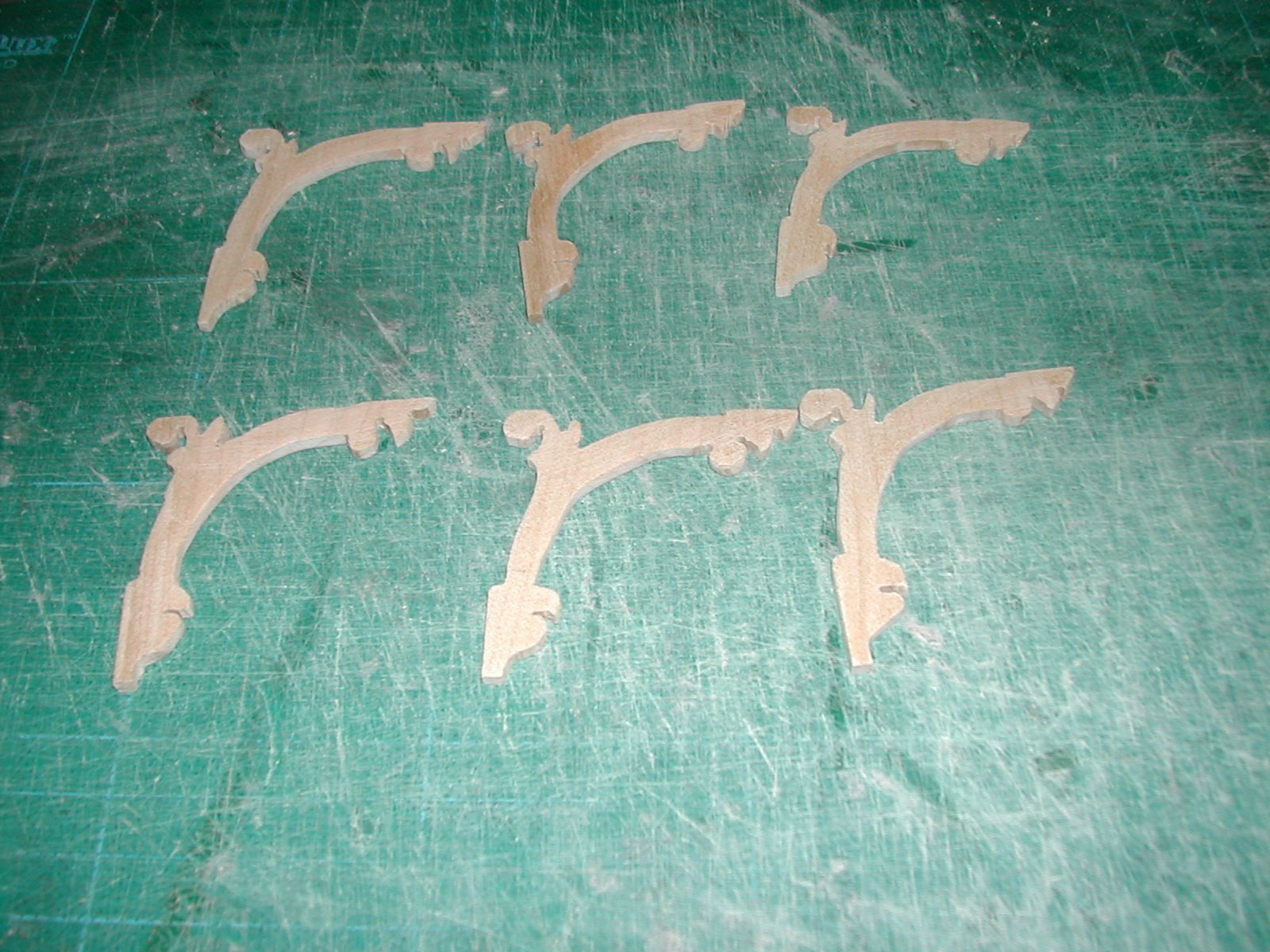 |
The porch
floor was then covered with the floor boards cut from 1/16 " birch
sheets
as shown on the right. These floor boards were glued to the porch floor
using "Goop" which is tacky enough so that the boards stay in place
until the adhesive has completely set (approximately 24 hours). After
the porch was
completed, it was given two coats of white high gloss finishing paint -
the same paint that was used in restoring the real house. The porch
floor was painted with a light gray paint.
|
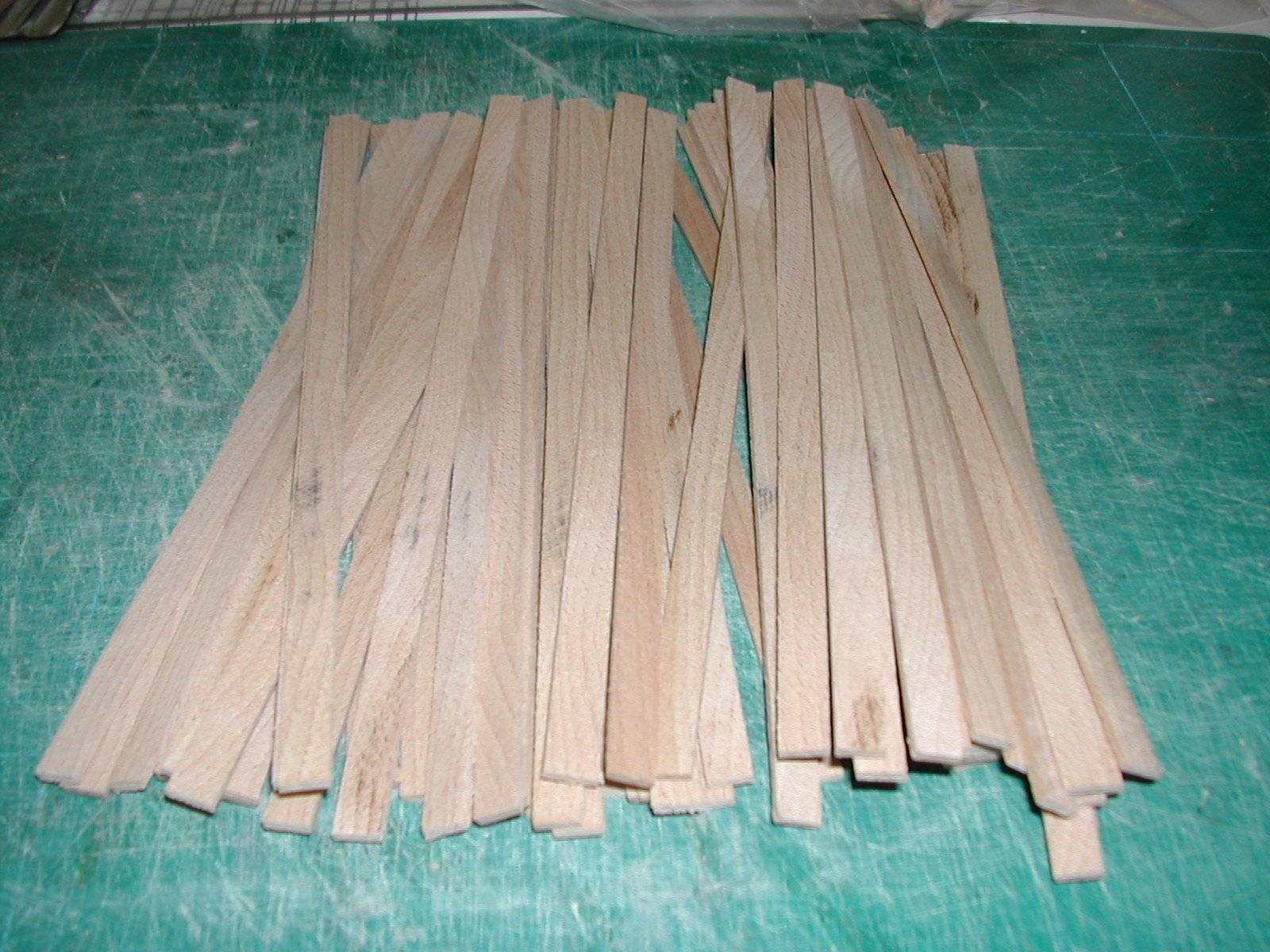 |
Once the porch was completed,
it was put in place but it remains a free standing part of the
miniature and can be removed if the house needs to be moved. The light
sky blue color
of the porch ceiling is quite commonly used in Maine regardless of the
color used for the house trim or shutters. According to local
legend, you are supposed to be able to sit on your porch and look at
the sky without having the porch ceiling distract from the sky
color. One of the things we like especially about Maine is that the sky
really is blue here, the same color we remembered from our childhood
days before pollution and smog created the yellow/gray color now
seen over most cities. Unfortunately, in many areas of the country,
there is enough
particulate matter in the sky now to obscure the true color of the sky.
|
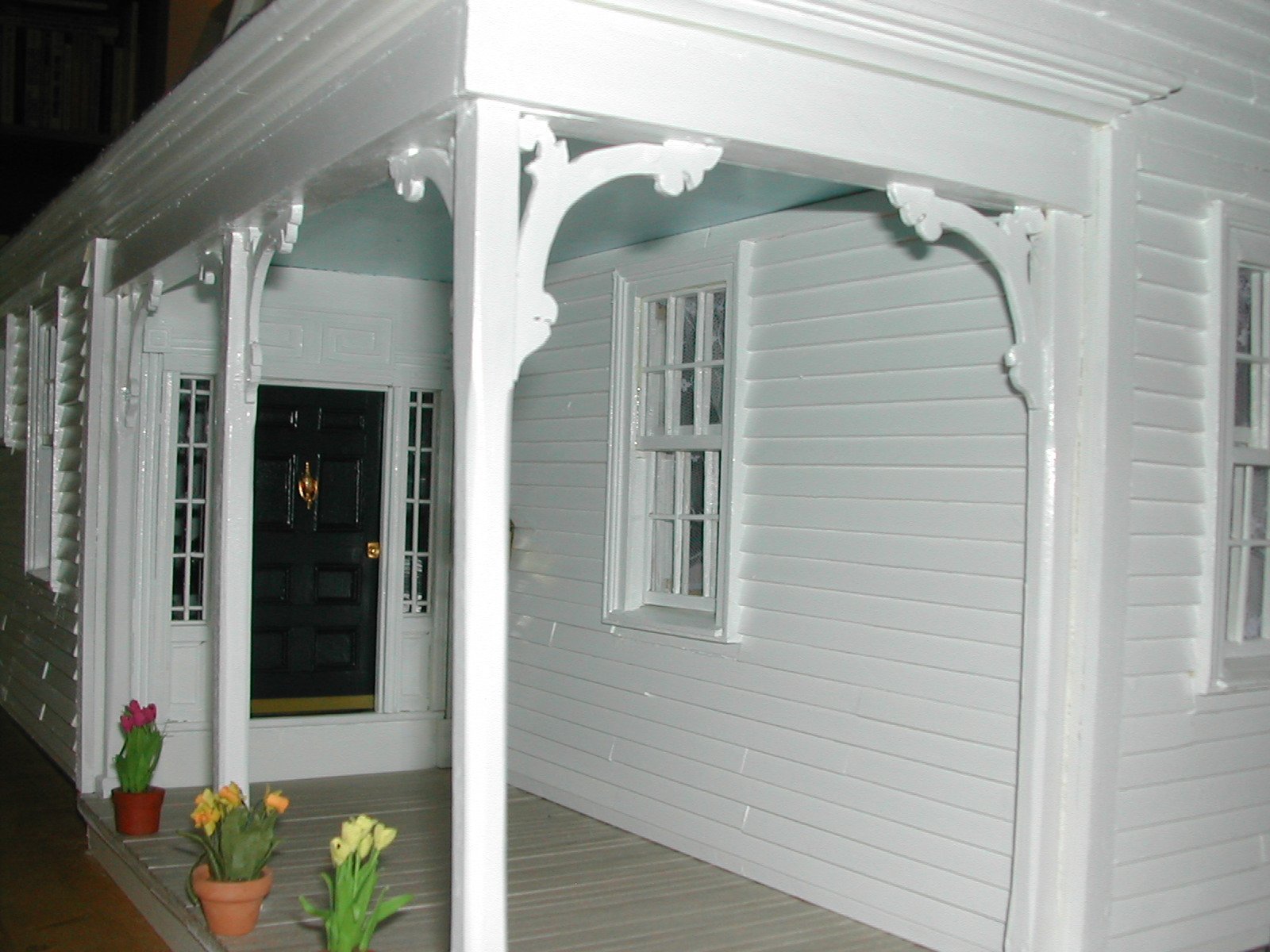 |
Once the house is
fully assembled the Greek revival details surrounding the front door
become more evident. The intricate design is classic to the
architectural style.
In Maine you will find many houses that have recessed side front doors.
They are built this way so that the door is protected from the weather
and to minimize the heat loss when the door is opened. By this
placing it is possible to create a center hall colonial layout
using an indented entry door. As soon as you enter, you turn either
right or left and the house is the same configuration as it would
be if it had a center position front door facing the street side
of the house.
|
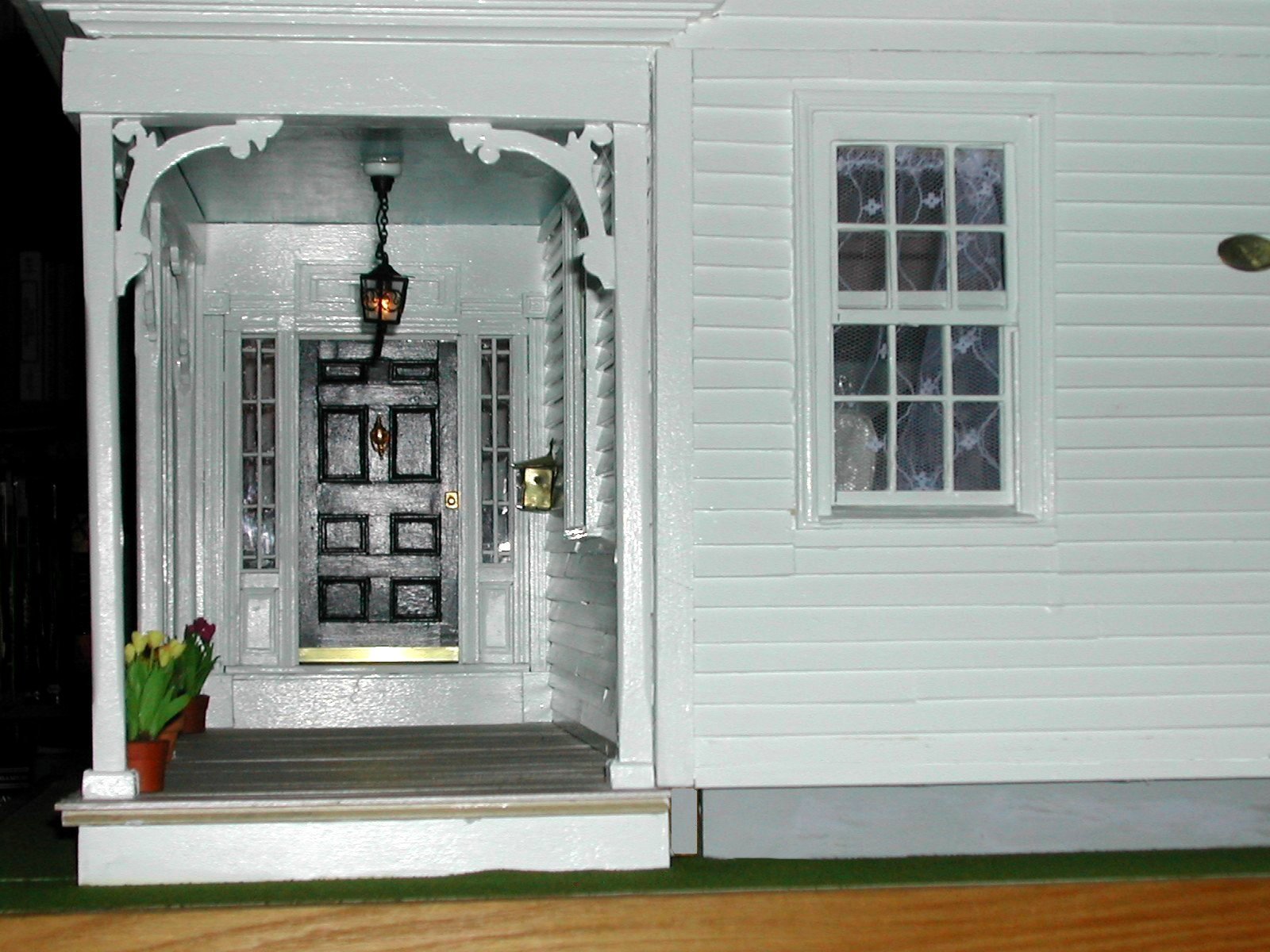 |
